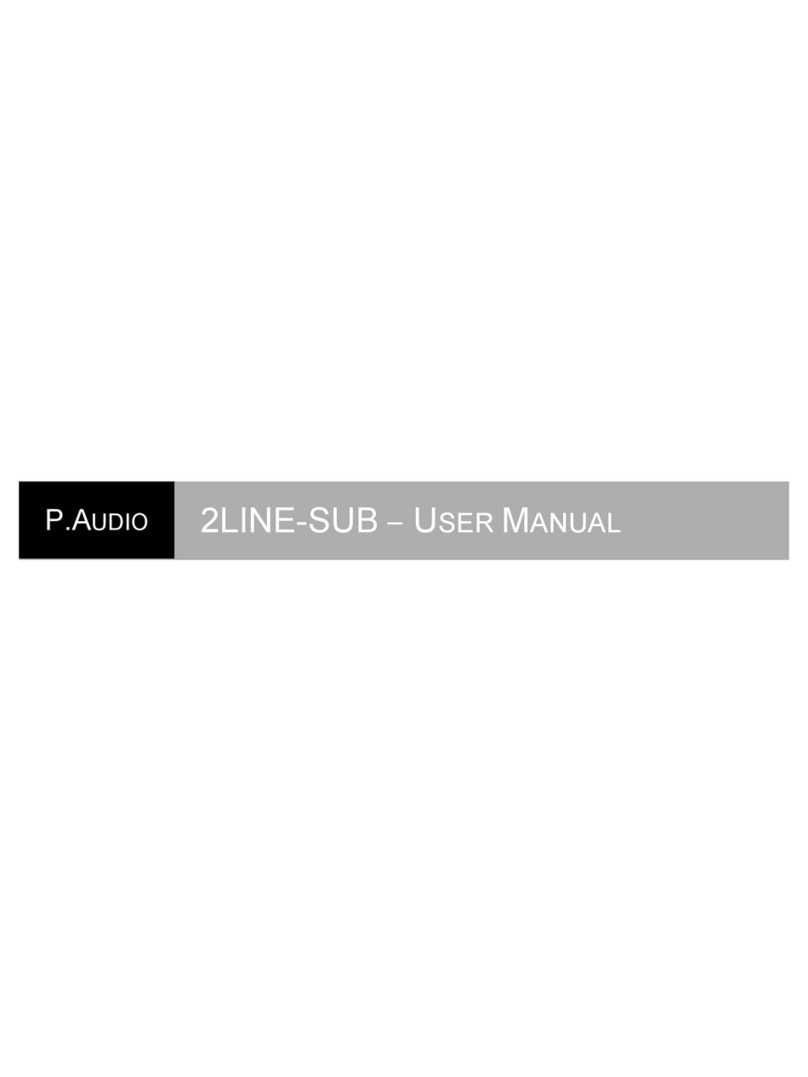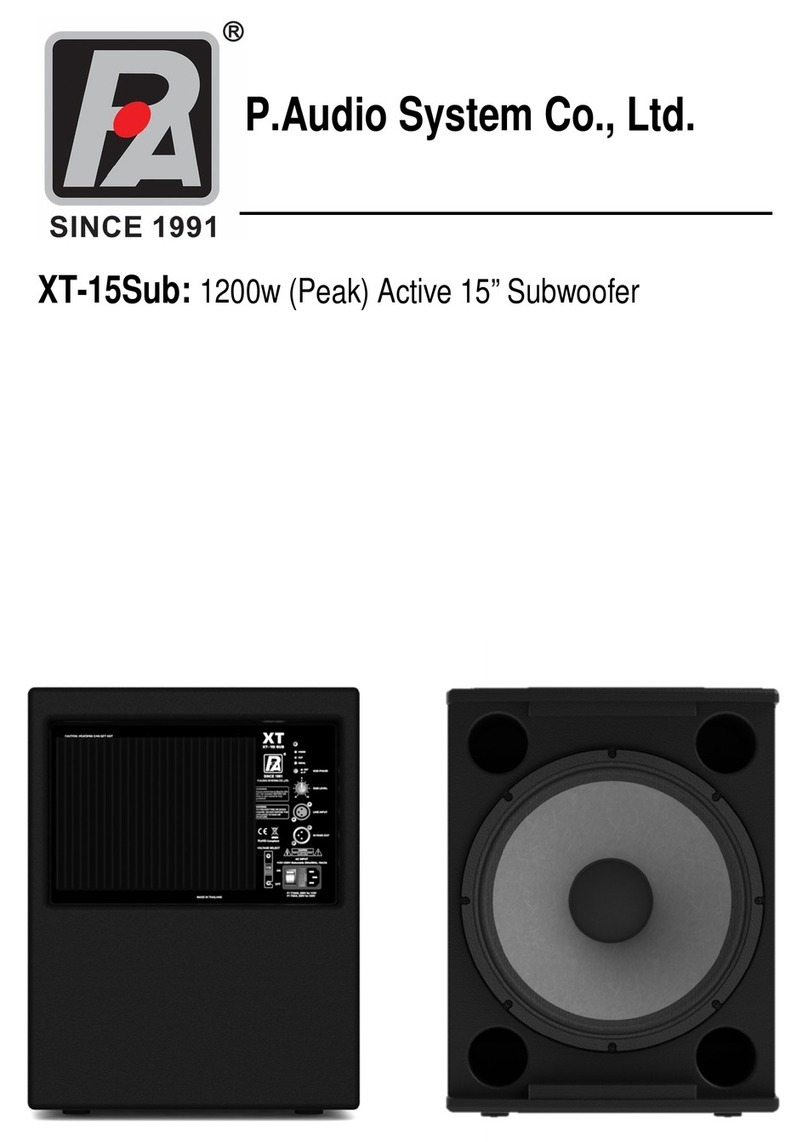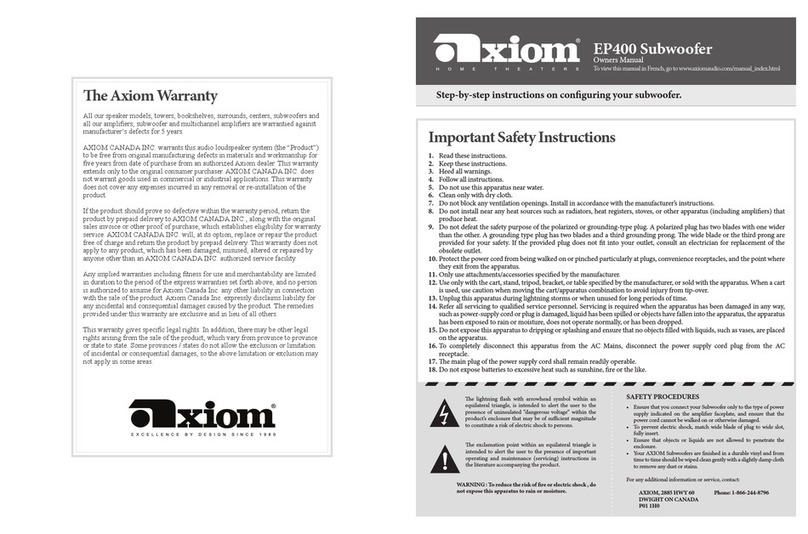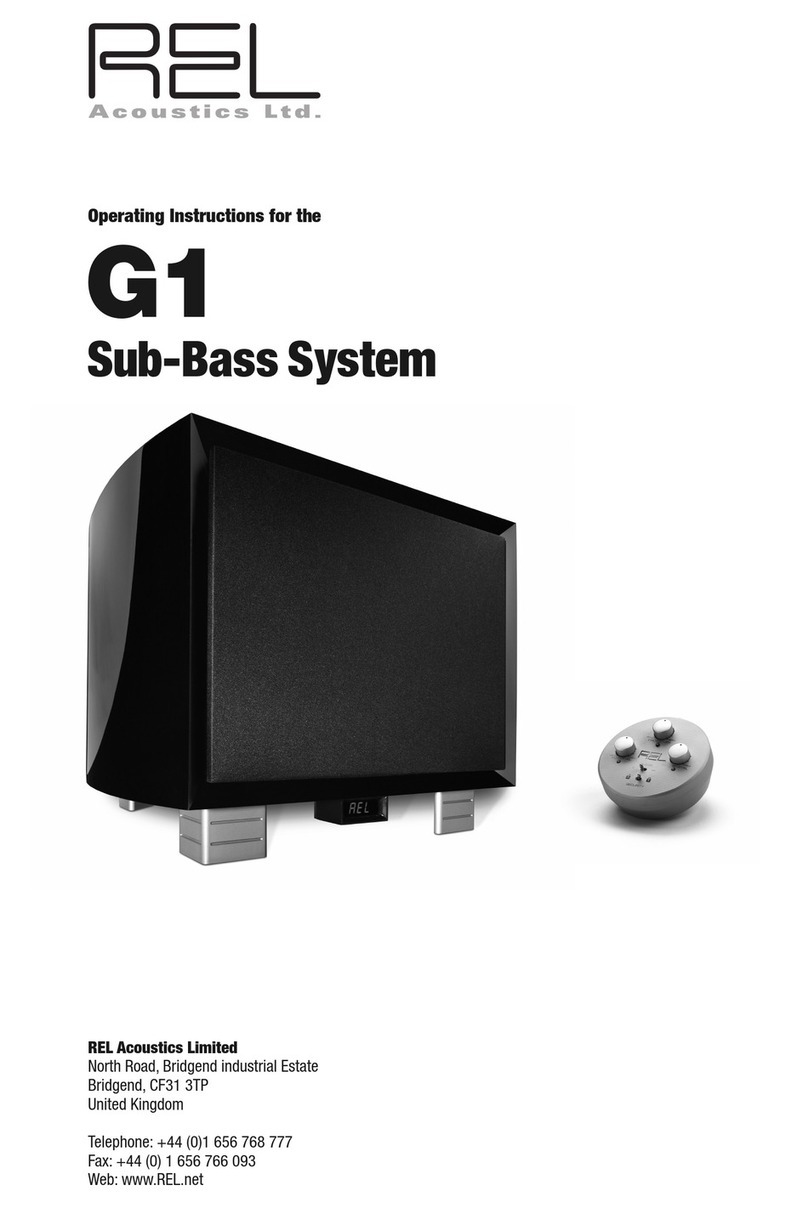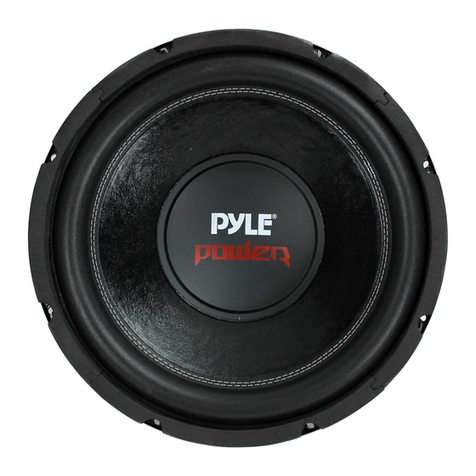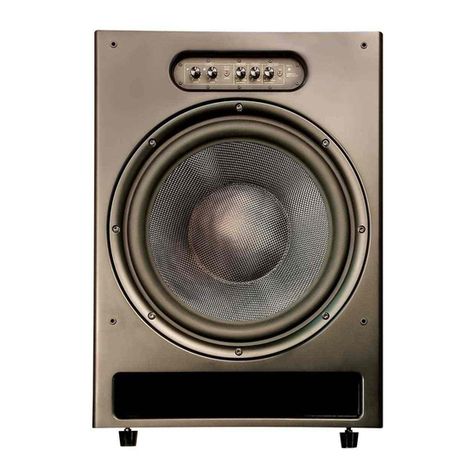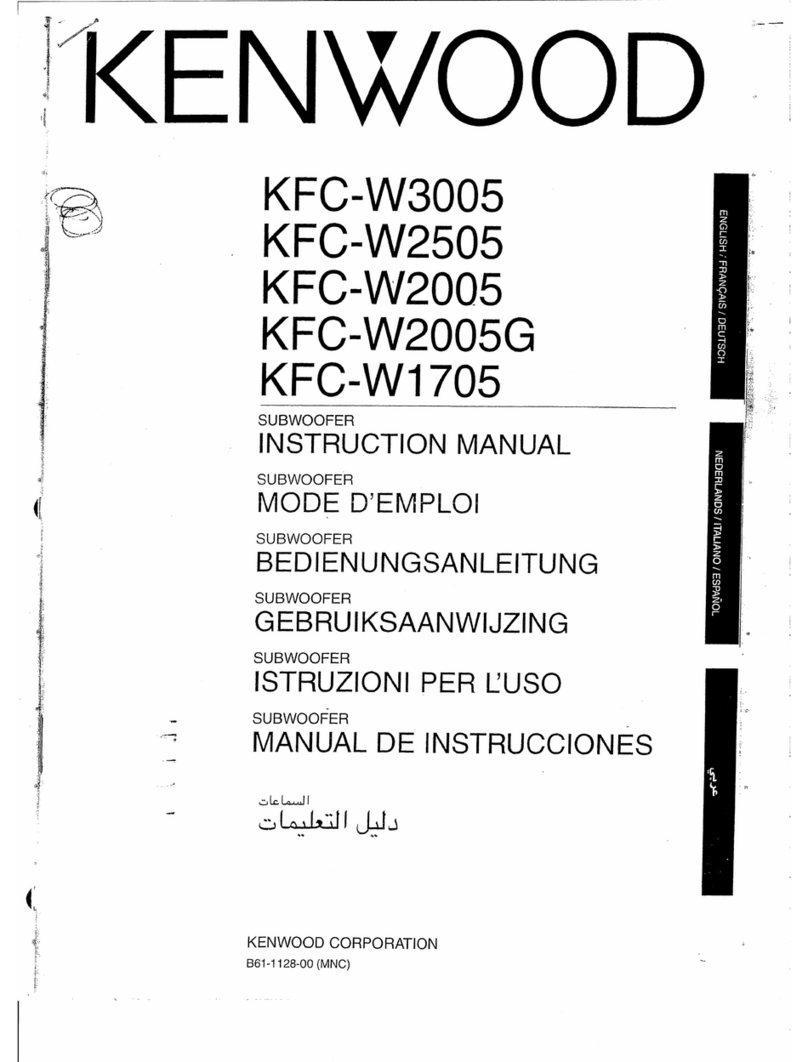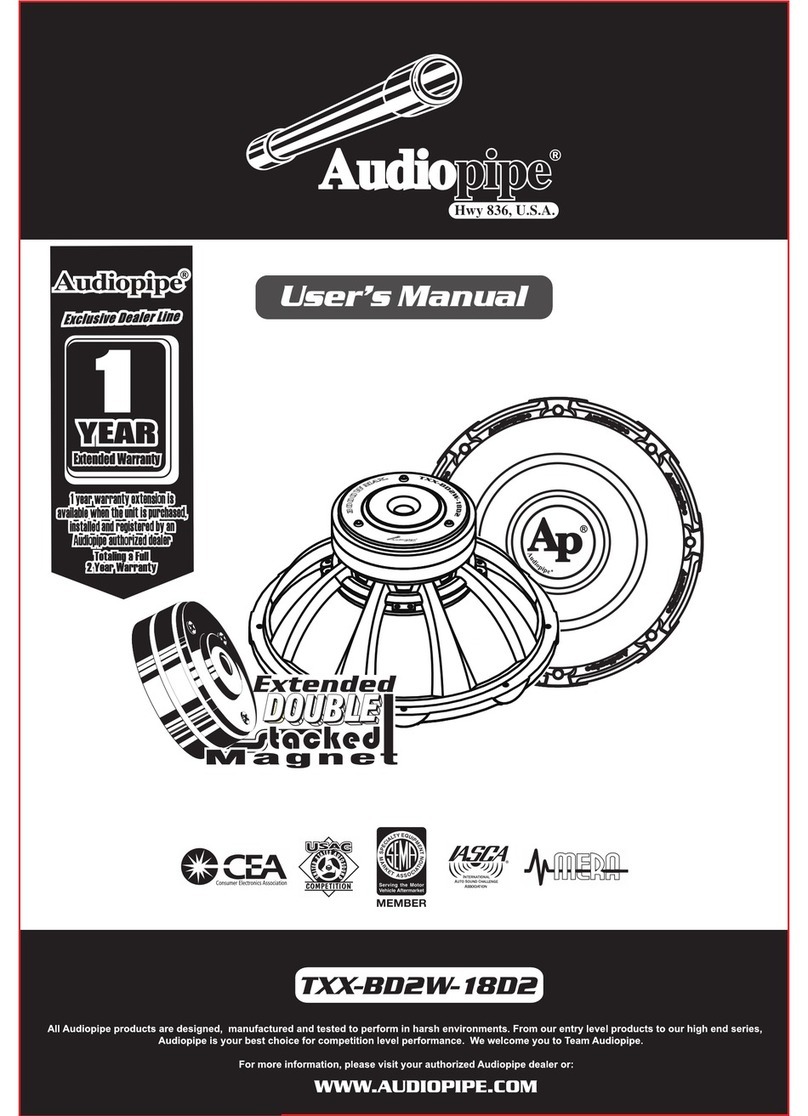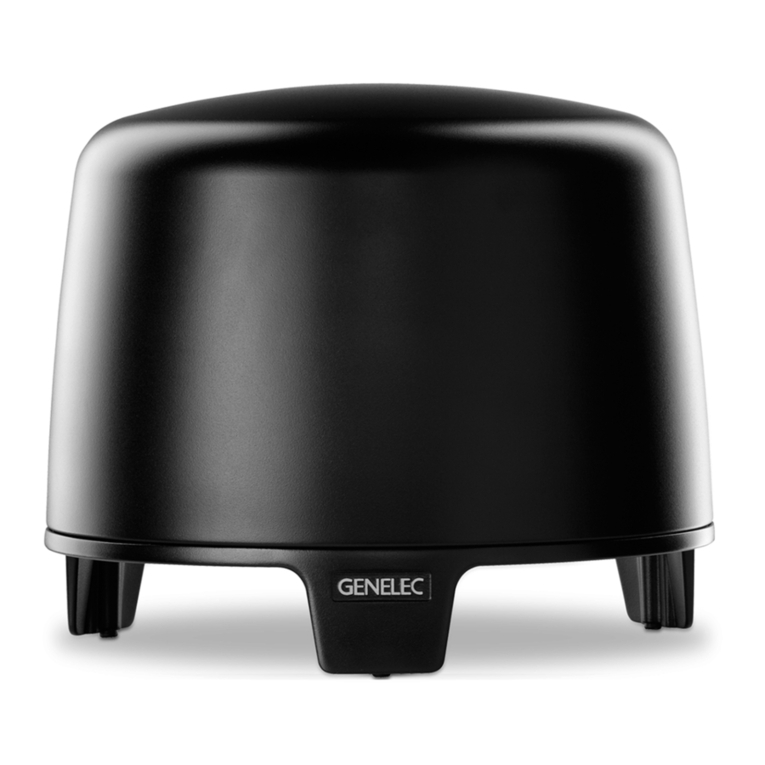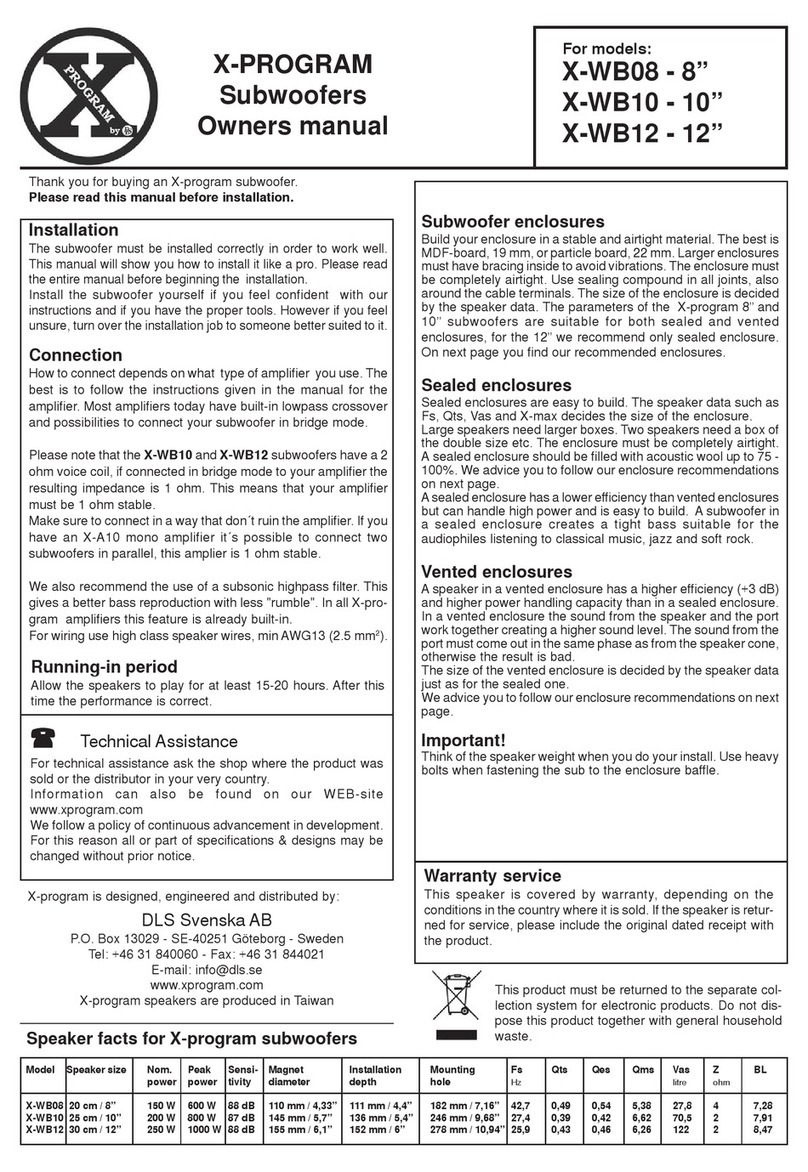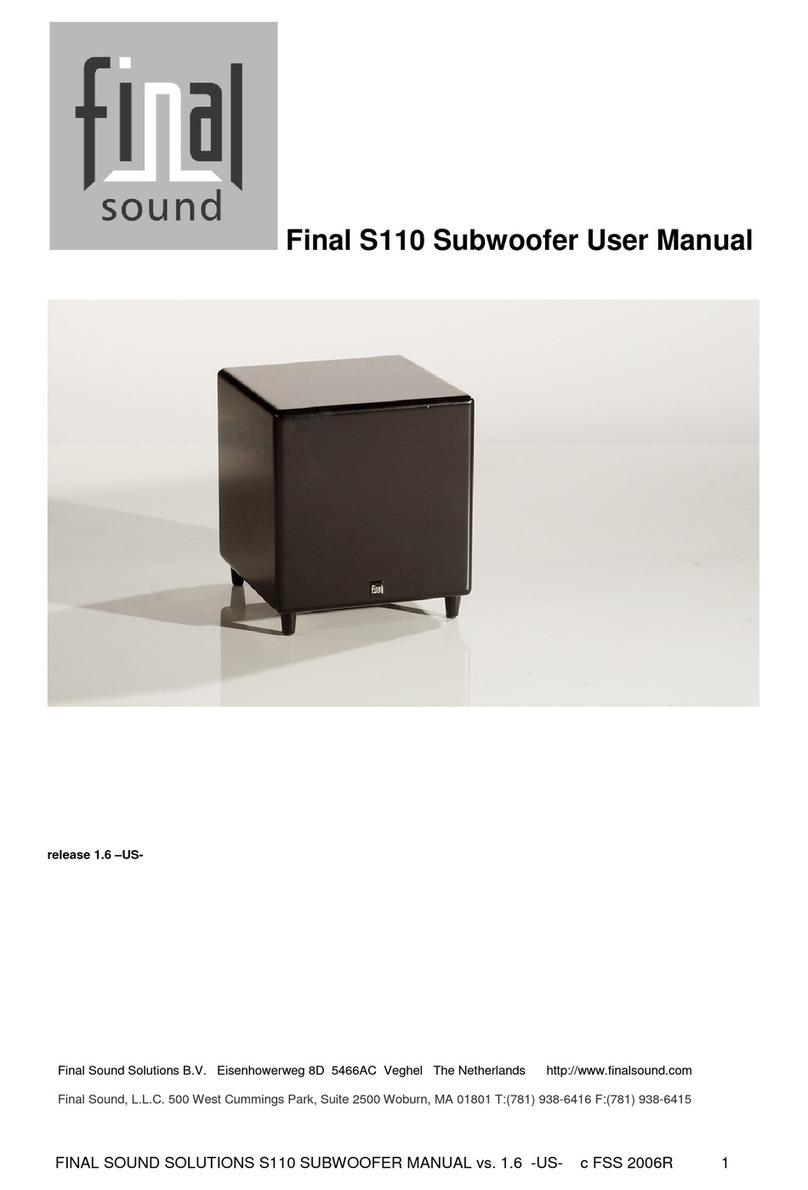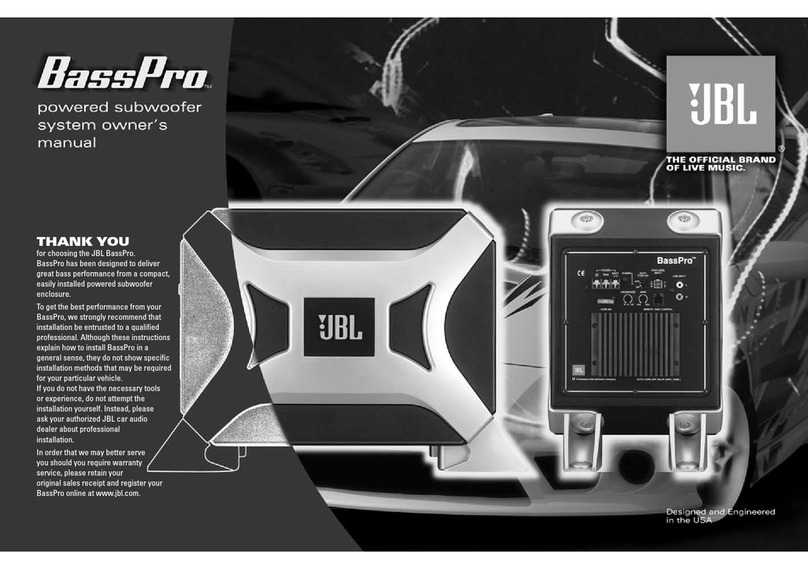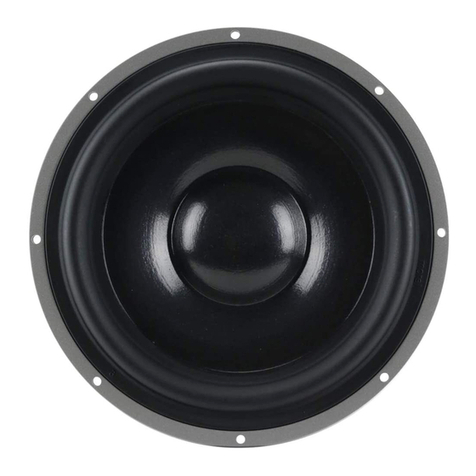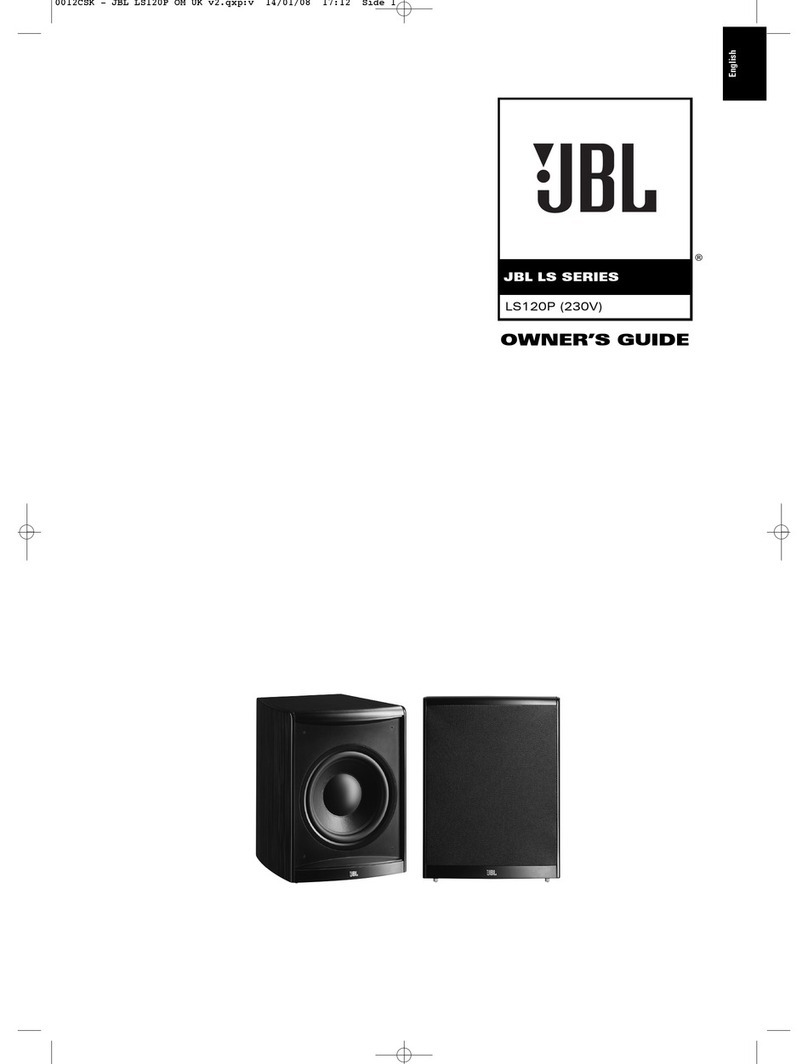P.Audio SB218 User manual

SB 218
User Manual
SB
-
Ensure to read all details in both the user manual!
Rev 1.0, 2017

Page | 1
Contents
1. Introduction .............................................................................................................................. 3
2. Specifications............................................................................................................................. 3
3. SB-218 Cabinet Details ............................................................................................................... 4
4. Setup and use of VIA SUB........................................................................................................... 4
4.1. AC Mains connection.......................................................................................................... 4
4.2. Audio Connection............................................................................................................... 5
4.3. DSP Presets ........................................................................................................................ 6
4.4. VIA SUB Remote control software ...................................................................................... 7
HARDWARE REQUIREMENTS ......................................................................................................... 7
COM CABLE ................................................................................................................................... 7
ID .................................................................................................................................................. 8
CONTROLLING THE SB-218 SUBWOOFER ....................................................................................... 8
4.5. Simple set up examples .................................................................................................... 10
4.5.1. Ground-stacked ........................................................................................................ 10
5. Accessories .............................................................................................................................. 10
5.1. VIA POLE MOUNT ............................................................................................................. 10
5.2. VIA SUB RAIN ................................................................................................................... 10
6. Troubleshooting ...................................................................................................................... 11
EQUALIZATION AND GAIN ........................................................................................................... 11
7. PRODUCT SERVICE & WARRANTY............................................................................................. 12

Page | 2
READ ALL OF THE INSTRUCTIONS INCLUDED IN THIS MANUAL
The exclamation point within an equilateral triangle is intended to alert the user to the presence of
important operation and maintenance instructions.
The lightning flash with arrowhead symbol within an equilateral triangle is intended to alert the user
to the presence of un-insulated “dangerous voltage” within the product’s enclosure that may be of
sufficient magnitude to constitute a risk of electric shock to persons.
1. The following safety notices must be read and adhered to for safe operation of the SB-218.
2. Copies of this manual should be retained by the system’s installer AND end-user.
3. This manual must be read and understood and ALL warnings must be followed.
4. Follow all instructions to insure optimal product performance.
5. The SB-218 is a convection-cooled device and requires at least 6 inches (152 mm) of clearance behind
the enclosure to allow the heat sink to adequately cool the internal electronics.
6. DO NOT INSTALL NEAR ANY HEAT SOURCES!
7. Use ONLY the supplied AC Mains connector.
8. Protect the AC Mains power cord from being walked on or otherwise damaged and inspect for
damaged connections and damaged insulation.
9. The SB-218 may NOT be suspended. Do not attempt suspension from the enclosure handles.
10. For safety reasons, do not place one loudspeaker on top of another without proper fastening systems.
11. Ensure the loudspeaker is securely installed in a stable position to avoid any injuries or damages to
persons or properties.
12. The SB-218 is not designed for permanent outdoor use. Ensure precautions are taken to protect the
electronics from moisture in outdoor environments!
13. Protect the power cord from being walked on or pinched particularly at the plugs, convenience
receptacles, and at the point where they exit from the apparatus.
14. This equipment must be supplied from a power system providing a PROTECTIVE EARTH Connection
and having a neutral connection, which can be reliable identified.
15. WARNING: To reduce the risk of fire or electric shock, do not expose this apparatus to rain or
moisture. The apparatus shall not be exposed to dripping or splashing and that no objects filled with
liquids, such as vases, shall be placed on the apparatus.
16. The AC inlet is used as the disconnect device and shall remain readily operable.
17. No naked flame sources, such as lighted candles, should be placed on the apparatus
EMI CLASSIFICATION FCC CLASS B STATEMENT ACCORDING TO TITLE 47, CHAPTER I, SUBCHAPTER A, PART
15, SUBPART B According to the standards EN 55103 this equipment is designed and suitable to operate in E3
(or lower E2, E1) Electromagnetic environments.
This device complies with part 15 of the FCC Rules. Operation is subject to the following two conditions: (1)
This device may not cause harmful interference, and (2) this device must accept any interference received,
including interference that may cause undesired operation.

Page | 3
1. Introduction
Thank you for purchasing the P.Audio SB218 and for your faith in us and our products. This product
will provide you many years of useful service with proper use and care. Please read this manual
completely and become familiar with the design and operation of this advanced active speaker
system.
The SB218 was designed to provide easy to use, powerful low frequency sound reinforcement with
extremely deep response and on board amplification.
Ease of use with on board amplification and DSP Presets.
High output from the lightweight neodymium transducers.
Reliable amplification from PASCAL.
2. Specifications
Specification
SB
-
218
General
Specifications
Type
Active
Subwoofer
Woofer Size
18”
x2
Woofer Voice Coil
4”
HF Size
N/A
HF Voice Coil
N/A
Cabinet design
Plywood
Handles
3
on each side
Pole Mount
M20 Socket
Weight
97 kg / 213.8 lbs
Dimensions
(HxWxD)
637x1207x846.3 mm
/ 25.1x47.5x33.3 in
Acoustic
Specifications
Sensitivity (1w/1m)
N/A
-
3dB Response
45Hz
-
100
Hz
-
10dB Response
30Hz
-
11
0
Hz
Maximum
Continuous SPL 135dB (1m, 1 cabinet)
Maximum Peak SPL
13
8
dB
(1m, 1 cabinet)
Dispersion
Essentially Omnidirectional
Electrical
Specifications
Impedance
N/A
Input
Line Level XLR
Thru
Line Level XLR
System Level Control
Gain Control
Power Output
1500w+1500w @ 1% THD
Amplifier Type
Class D with SMPS
Protection
Turn on delay; Short circuit protection;
DC Voltage protection; Peak Voltage
Limiter; Over Temp Protection
Indicators
Power On, Limiter
Active
, Signal Present

Page | 4
3. SB-218 Cabinet Details
The SB-218 is an active dual woofer subwoofer system, featuring lightweight neodymium woofers,
pascal amplification and remote control DSP on-board. The cabinet is constructed from Baltic birch
plywood, and coated in an extremely durable polyurea coating. Wheels are included on the rear of
the enclosure to allow easy transportation, and there are multiple handles to aid positioning.
4. Setup and use of VIA SUB
ATTENTION: SEE RIGGING MANUAL FOR SUSPENSION DETAILS.
4.1. AC Mains connection
The SB218 enclosure uses the Neutrik Powercon TRUE1 © system for all AC mains connections, at
universal voltages between 85-265Vac.
NOTE: Due to the high power consumption of the SB218 SUB, it is not allowed to link
cabinets together. Separate power cables must be used for each cabinet.
Ensure cable of a sufficiently large diameter for the current capacity is used. P.Audio
recommends the use of 2.5mm2 wire. Ready-made cable sets are available through
P.Audio, and are included in Line Array ‘sets’.

Page | 5
To mate the AC mains cable with the AC mains connector on the amplifier, align the plug with the
connector, insert the plug, and rotate clockwise until a ‘click’ is heard and the cable is locked into
place. This locking mechanism also functions as the power switch for the amplifier.
To disconnect the cable end of the AC mains connector, pull back on the yellow thumb grip, and
rotate the plug assembly counter-clockwise until the connector can slide out easily.
TIP: Always connect the cable before turning on mains power to avoid accidents.
Likewise, also turn off mains power before disconnecting the cable. NEVER carry a
live cable to the speaker before connection.
NOTE: DO NOT CONNECT THE AC MAINS END OF THE AC MAINS CABLE IN AN AREA
THAT IS WET OR SUBJECT TO CONDENSATION OR DAMP CONDITIONS!
Once the AC mains cable is securely connected to both the amplifier and AC mains supply, the
amplifier will be turned on. It is good practice to lower the volume level during turn on to avoid any
unexpected loud audio. As such it is also recommended to connect signal cables before powering up
the system.
NOTE: If the pilot light does not illuminate within 30 seconds the unit may have a
fault. If this occurs, the unit should be returned to P.Audio for evaluation.
THERE ARE NO USER-SERVICABLE PARTS INSIDE. DO NOT REMOVE THE AMPLIFIER MODULE! (See
the section below “Replacement of Components” for more detailed information).
4.2. Audio Connection

Page | 6
The audio input on the SB218 SUB amplifier is a balanced line level XLR type, with a paralleled THRU
connection for linking to other speakers. The level control ONLY affects the amplifier being adjusted,
so other amplifiers using the linked signal remain unaffected.
For best noise rejection, it is recommended that only balanced cables are used.
4.3. DSP Presets
There are 8 factory-set presets available on the SB218 SUB cabinets. Below is a description of the
preset modes and their functions.
The VIA 8 and 12 cabinets feature an FIR crossover that introduces a latency of 5.3ms into the
amplification system. This is already accounted for in the VIA SUB and SUB-218 subwoofers, but
must be taken into account if any other speakers are used in the same system.
The SB218 SUB features 4 different factory pre-set modes to adjust the high pass and low pass filters
in the DSP software.
Preset 1: 30-80Hz Standard Mode
Preset 2: 30-60Hz Infra Mode
Preset 3: 30-80Hz Cardioid Mode
Preset 4: 30-60Hz Infra Cardioid Mode
Preset 5: User Preset
Preset 6: User Preset
Preset 7: User Preset
Preset 8: User Preset
Usage Example – Small indoor event using SB218 SUB for all low frequency
In this situation, it is recommended to use preset 1 for full low frequency production.
Usage Example – Large event with suspended VIA SUB and ground-stacked 218 SUB.
In this situation it is recommended that the VIA SUB be used to reinforce the mid low output from
the line array. The SB 218 SUB can be used for the 30-60Hz band, whilst the VIA SUB can be used 50-
100Hz. There are also situations where the 218 SUB can be used 30-100Hz, overlapping the VIA SUB
as long as care is taken to align the outputs correctly. This can be done using the available user
presets.

Page | 7
4.4. VIA SUB Remote control software
The remote control software enables the user to adjust EQ, delay, polarity, noise gates and other
aspects of the VIA series performance. Once the unit is connected to the computer, any changes
made on the computer will become active, but will NOT be saved onto the amplifier, until the preset
is stored onto the VIA series amplifier.
HARDWARE REQUIREMENTS
Essential:
Windows computer running windows XP or newer operating system. At this time, compatibility with
windows 10 is not guaranteed (but has been tested with good results).
Spare hard drive space of 50MB
Recommended:
RAM
2GB
Operating System
Windows 7
Processor
Dual core 2gHz
or higher
COM CABLE
The COM cable is an accessory, available from P.Audio, which allows the user to take control of the
VIA series amplifiers from any windows based PC. Upon connecting the COM cable and opening VIA
software, a dialog screen will appear checking options for connecting to the device in question. To
ensure communication occurs on the right COM cable, this must be selected from the drop down
list.

Page | 8
For linking between amplifiers, standard CAT5 type cabling can be used.
To connect the COM cable to the VIA series amplifiers, simply connect the USB plug to the windows
computer, and plug the other end into the socket on any available VIA series amplifier. Ensure to
align the plug correctly and do not exert too much force onto the USB plug.
ID
Once the required amplifiers are all linked together,
the software can be started. To start the software,
click start All Programs VIA-SUB VIA-SUB
Application.
Once the COM cable is chosen, the software needs to
know which units to communicate with. ID for VIA
series amplifiers as set by the factory range from 1-
32, although the user to is free to change this as they
see fit with the ‘configure ID Device’ utility. The
software can communicate with a maximum of 32
units at once.
Once all is set up, press OK and the software will
launch.
CONTROLLING THE SB-218 SUBWOOFER
Once the software is up and running, all connected speakers will be seen in the ID list to the left
hand side of the screen. All parameters available to the user will be available by double clicking the
device required to monitor, and the parameters screen will be displayed.
Across the top of the parameters window, there are several options available to the user:
Load – Allows loading of a preset file from a storage location such as the computer hard drive.

Page | 9
Save – Allows saving of the current parameters to a file in a storage location such as the computer
hard drive.
Store – Allows storing of the current parameters to a preset location on the amplifier. Locations are
provided to the user to enable this, and avoid writing over any factory presets. Once a preset is
overwritten, the original preset file must be used to recover the data.
Recall – Loads a preset from the amplifier memory, remotely. This allows presets to be changed on
units in inaccessible locations. However, once the COM cable is removed, the unit will revert back to
the preset as indicated by the knob on the unit itself.
Setup – This is largely a factory operation to switch the amplifier from two-way to bridged mode.
This is not required by the user unless some drastic last minute servicing is required.
From the parameters page, the following parameters can be adjusted:
Noise Gate – Allows the user to cut out background noise when the device is not in use. This can be
especially useful when a lot of open microphones are picking up crowd noise, or making a stage very
noisy.
Input Source – Allows the user to select between a noise source and the analog input. The noise
source is especially useful when tuning the system to a particular room, or for fault finding.
Noise Generator – Provides level control and noise type when noise generator is selected as the
input.
Phase – Polarity switching is allowed with the option of 0 or 180 degrees.
Delay – Delay can be specified in both time and distance.
DLF – DLF is a set of filters tuned specifically to make recorded music sound more dynamic at low
levels. In the ‘music’ presets on the amplifier, this option is turned on.
High Pass Filter – All of the cabinets already have a high pass filter programmed in, but an extra high
pass filter is provided to the user for crossover, or extra subsonic filtering.
5 Band Parametric EQ – Q factors up to 10 are available to give the user complete control over the
sound of their system.
Mute – Separate mute controls are available for both low and high frequency output channels.
Passwords:
OUTPUT = for editing parameters in detail
LIMCMP = to adjust clip limiter settings. This is not saved in the preset file.

Page | 10
It is highly recommended that in situations where the remote control software is being used, the
amplifier should be set to presets 5-8, and any changes made in the software are subsequently
saved into the preset 5-8 slot and power cycled to the amplifiers. This will ensure that if there is
any power failure, the preset will be stored into the amplifier already.
4.5. Simple set up examples
4.5.1. Ground-stacked
The SB-218 may only be ground-stacked. Different dispersion characteristics may be obtained by
setting up with different configurations. It is outside the scope of this manual to explain all the
different set up options.
The VIA fly bar may be placed on top of the SB218 subwoofer in either horizontal or vertical
orientation. The sideways movement may be locked with pins. However, it is required to also
secure the system against tipping. A ratchet strap may be used for this purpose. The Fly bar,
supporting structure or supporting subwoofers must always be placed on secure and level ground.
5. Accessories
5.1. VIA POLE MOUNT
The VIA Pole Mount adaptor, in conjunction with the M20 pole stand can support the weight of 2
VIA 8 or 12 cabinets for small events.
5.2. VIA SUB RAIN
The VIA SUB Rain cover adds additional protection from small amount of rain from entering the
connectors. However, for heavy rain, it is recommended that additional protection be made to
protect the amplifier electronics from humidity and splashing water.

Page | 11
6. Troubleshooting
The VIA series speakers are high-quality professional sound reinforcement system designed for use
in both indoor, and dry outdoor applications. Some basic precautions will insure long-term reliability.
EQUALIZATION AND GAIN
The VIA series has all the required equalization and gain functions included in the internal digital
signal processing circuits. Both the equalization and gain functions have been optimized for flat
frequency response and maximized system dynamics.
If additional equalization is required, care should be taken to avoid excessive EQ in any frequency
band, but particularly at low frequencies. Excessive equalization can produce “band selective”
clipping and distortion. All EQ boost levels should be monitored if system distortion is present.
PROBLEM: Distorted sound
When input levels to the VIA amplifiers exceed 0.775 V RMS for line level inputs it is possible to
produce system clipping or overdrive. Although the DSP processor has input limiters, it is still
possible to “overdrive” the input section of the enclosure. If distorted sound is present the following
steps should be taken.
Verify that the mixer’s output is not clipping or overloaded. If the output metering section of the
mixing console is continuously in the “red” then the output level should be reduced. (Occasional
“red” indications are usually fine and are dependent on the mixing console’s output capability).
Verify that excessive equalization is not present anywhere in the signal chain.
Verify that AC mains levels are within the required range.
Verify that the correct gain has been chosen on the rear gain control knob on the amplifier.
Voltage measurements on the AC Mains should be performed by a licensed electrician or
individual trained in making high-voltage measurements.
If a harsh digital clipping sound is present, it is a sign that the input level to the DSP is too high. The
gain from the mixer must be reduced.
PROBLEM: No sound
Verify that the amplifier pilot light is on.

Page | 12
Verify that there is AC Mains voltage on the AC Mains input to the amplifier.
If AC Mains voltage is present, verify that the fuse is not blown.
If the fuse is not blown, try different presets to ensure there is no DSP issue.
Verify that the correct fuse is inserted. Guidelines for this can be found earlier in this
manual, and on the amplifier panel itself.
If the problem has not been fixed, please contact your local P.Audio distributor for service
information.
NOTE: IF THE FUSE IS BLOWN REPLACE ONLY WITH THE SAME TYPE OF FUSE. THIS FUSE
TYPE IS NOTED ON THE INPUT PANEL. THERE IS ONLY AN INTERNAL FUSE.
7. PRODUCT SERVICE & WARRANTY
There are NO user-serviceable parts inside the VIA Series amplifiers. The amplifier does NOT
need to be removed in case of woofer service..
The VIA amplifier module MUST be serviced by a company authorized by P. Audio.
Replacement of Components
REPLACEMENT OF COMPONENTS MUST BE PERFORMED BY A QUALIFIED TECHNICIAN OR
ONE KNOWLEDGABLE IN THE REPLACEMENT OF TRANSDUCER COMPONENTS!
DO NOT ATTEMPT ANY REPAIRS UNLESS THE VIA SERIES AMPLIFIER HAS BEEN
DISCONNECTED FROM THE AC MAINS SOURCE!
In the event of 18” woofer failure, the woofer may be accessed by removing the front grille and then
removing the woofer. This should be done by a qualified technician or contractor. There is no need
to remove the amplifier panel in the event of a woofer failure.
Use extreme care when handling the VIA amplifier modules. The components are fragile
and the module must not be set down on the component side or damage will occur!
Care should be exercised when disconnecting the amplifier module from each woofer. Be sure to
observe the wiring polarity of both woofers. Ensure that both the woofers are wired with the
correct polarity observed. This is critical for correct functioning of the system.
Table of contents
Other P.Audio Subwoofer manuals
